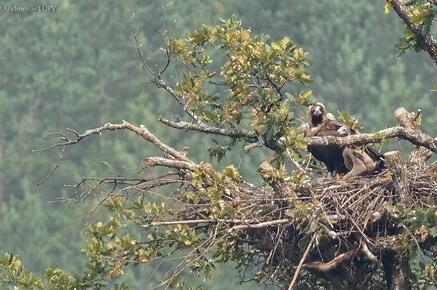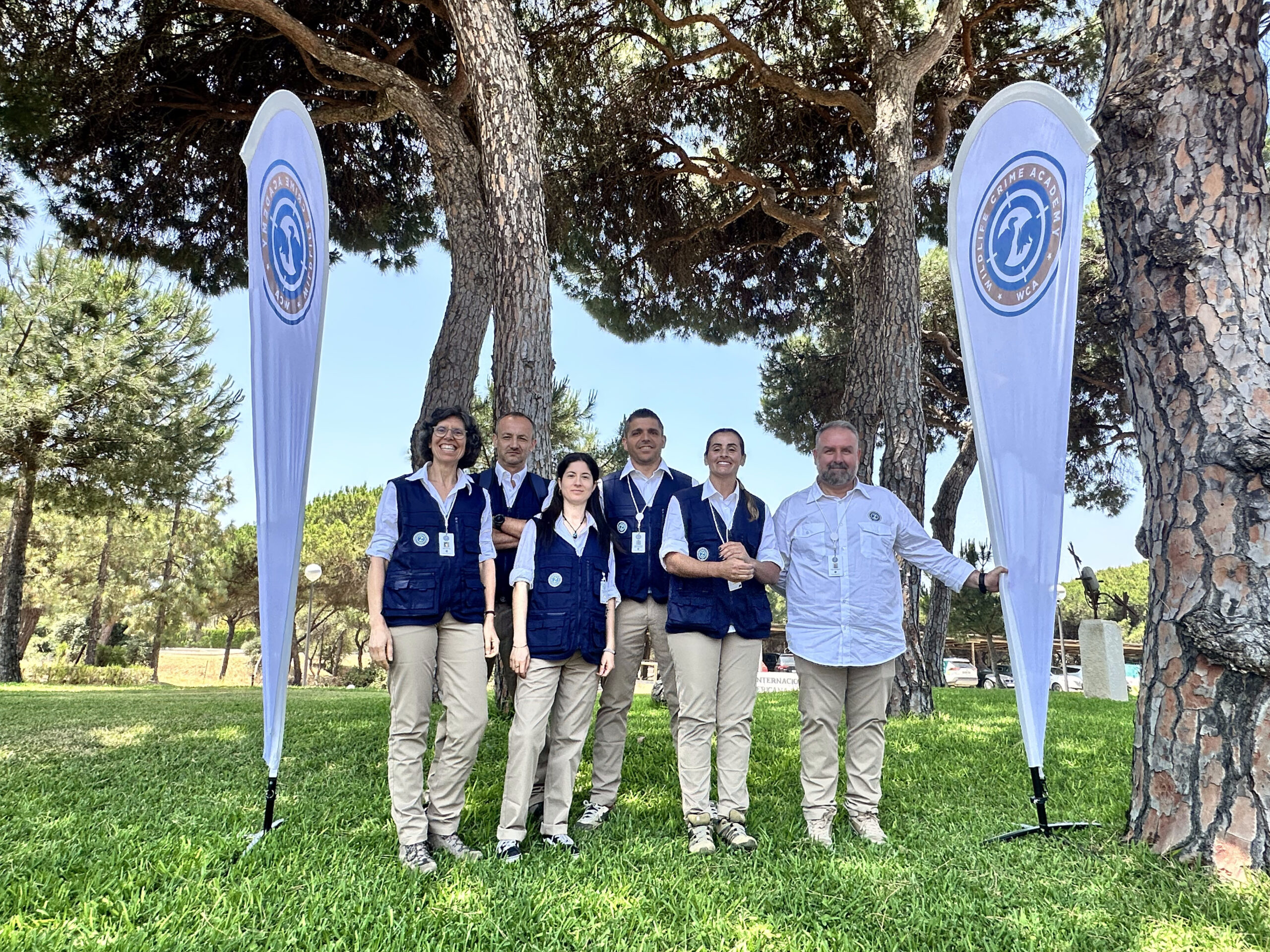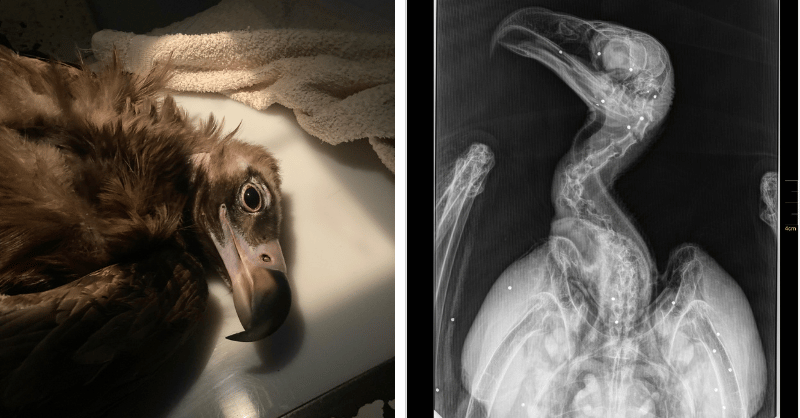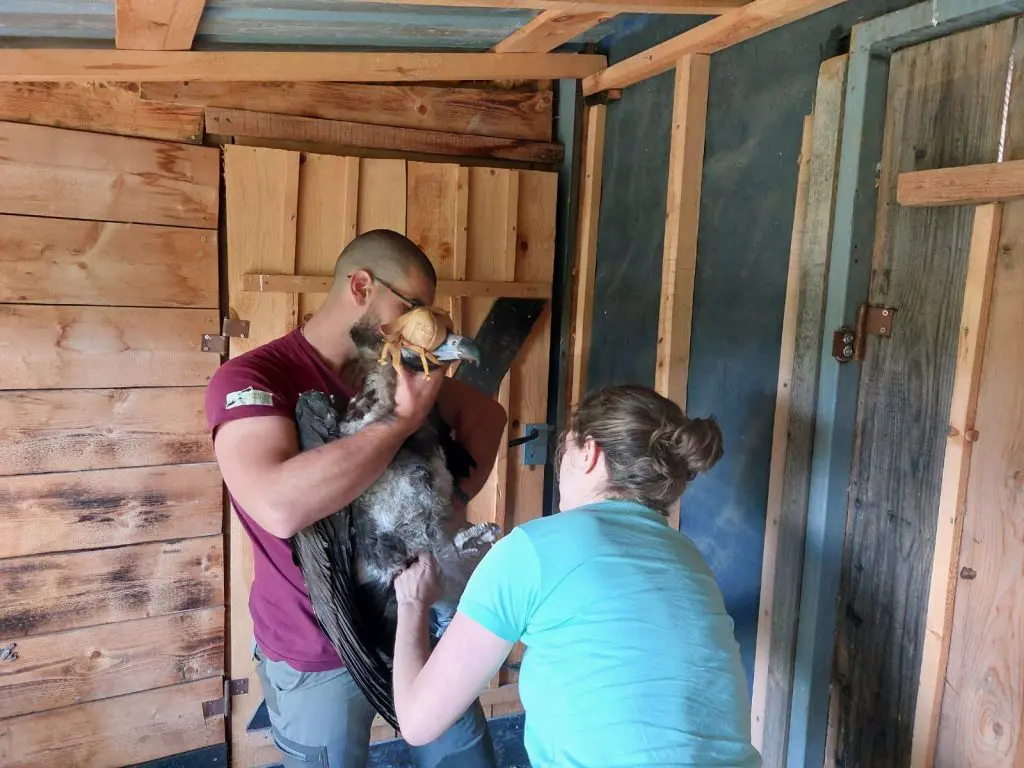Three of the only five Cinereous Vulture (Aegypius monachus) chicks that hatched this year at the Douro International cross-border colony were tagged in July 2024 with a GPS/GSM device as part of the LIFE Aegypius Return project. Europe’s largest vulture has a conservation status of “Endangered” in Portugal, the colony in the Douro International area is the most isolated and thus most fragile in Portugal.

Arribes: the first chick on the Spanish side tagged with a GPS/GSM transmitter
The project team and Portuguese and Spanish collaborators ringed and tagged two chicks in the Douro International Natural Park (PNDI) in Portugal and one chick in the Arribes del Duero Natural Park (PNAD) in Spain. The latter is from a recently discovered breeding pair of Cinereous Vultures, the first fitted a GPS/GSM tag in the PNAD.
Named Zelha, Celtis, and Arribes – the first two in honour of trees native to the region and the third to the bird’s birthplace – the tagged vultures will now be continuously monitored by the LIFE Aegypius Return team.


Ensuring the survival of each pair’s only offspring is crucial to increase the colony
The GPS/GSM transmitters will provide valuable information on the vultures’ movements and behaviour, which is essential for ensuring that these endangered birds have a higher survival rate in the critical phase of leaving the nest, when they begin to venture out on their first flights and are more fragile and susceptible to threats. Ensuring the survival of the one chick that each Cinereous Vulture breeding pair has per breeding season is crucial to increasing the colony of this species in the region.
The team also recorded the chicks’ biometric data, such as wing and beak size, and collected biological samples, particularly blood samples, which make it possible to analyse the birds’ characteristics and health status.


Transboundary collaboration for the tagging
The tagging of these Cinereous Vultures was made possible thanks to the Portuguese-Spanish collaboration under LIFE Aegypius Return, which involved Palombar, the Arribes del Duero Natural Park; Junta de Castilla y León; Dirección General de Emergencias – Cuerpo de Agentes Forestales de la Comunidad de Madrid; Universidad de Oviedo; Liga para a Protecção da Natureza; Divisão de Áreas Classificadas e Vigilantes da Natureza from Instituto da Conservação da Natureza e das Florestas – Direção Regional da Conservação da Natureza e Florestas do Norte; the veterinary team from Centro de Recuperação de Animais Selvagens – Hospital Veterinário da Universidade de Trás-os-Montes e Alto Douro; and Javier de la Puente, a bird conservation specialist and a Palombar collaborator.

There are eight breeding pairs in the Douro International cross-border colony
The Cinereous Vulture became extinct as a breeding species in Portugal in the early 1970s. However, the species remained on the border strip of the centre and south regions, with individuals coming from Spain. It wasn’t until 2010 that the species bred again in Portugal, in the Tejo Internacional Natural Park. In 2012, the first breeding pair was recorded in the PNDI and, in 2019, the second. Currently, eight breeding pairs have been confirmed in the cross-border colony of the Douro International, located in the territory of the PNDI and the PNAD. In Portugal, five breeding colonies are now known.
Three major objectives achieved
The LIFE Aegypius Return project has already achieved three of its major objectives: the number of colonies of the species in the country has increased from four to five; the conservation status of the Cinereous Vulture has improved, from “Critically Endangered” to “Endangered” in the latest edition of the Red List of Birds of Mainland Portugal; and the number of breeding pairs of the species has more than doubled, from 40 to over 80.

The LIFE Aegypius Return project is led by the Vulture Conservation Foundation in collaboration with Palombar – Conservação da Natureza e do Património Rural, Herdade da Contenda, Sociedade Portuguesa para o Estudo das Aves, Liga para a Protecção da Natureza, Associação Transumância e Natureza, Fundación Naturaleza y Hombre, Guarda Nacional Republicana and Associação Nacional de Proprietários Rurais Gestão Cinegética e Biodiversidade.



